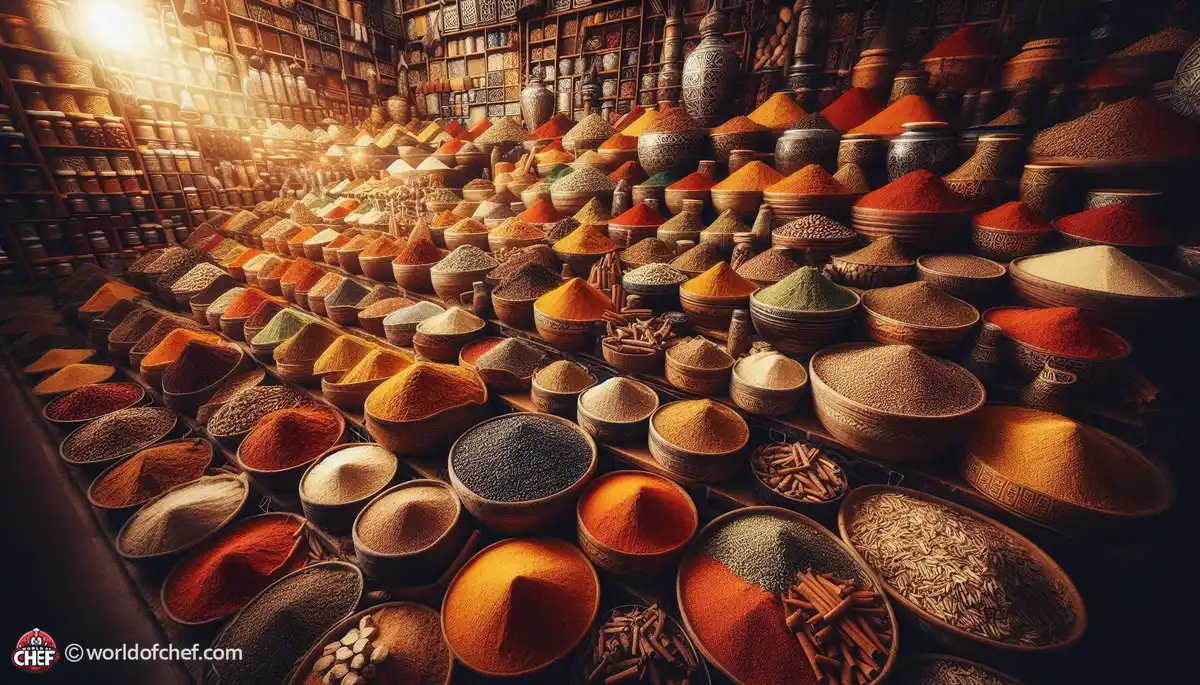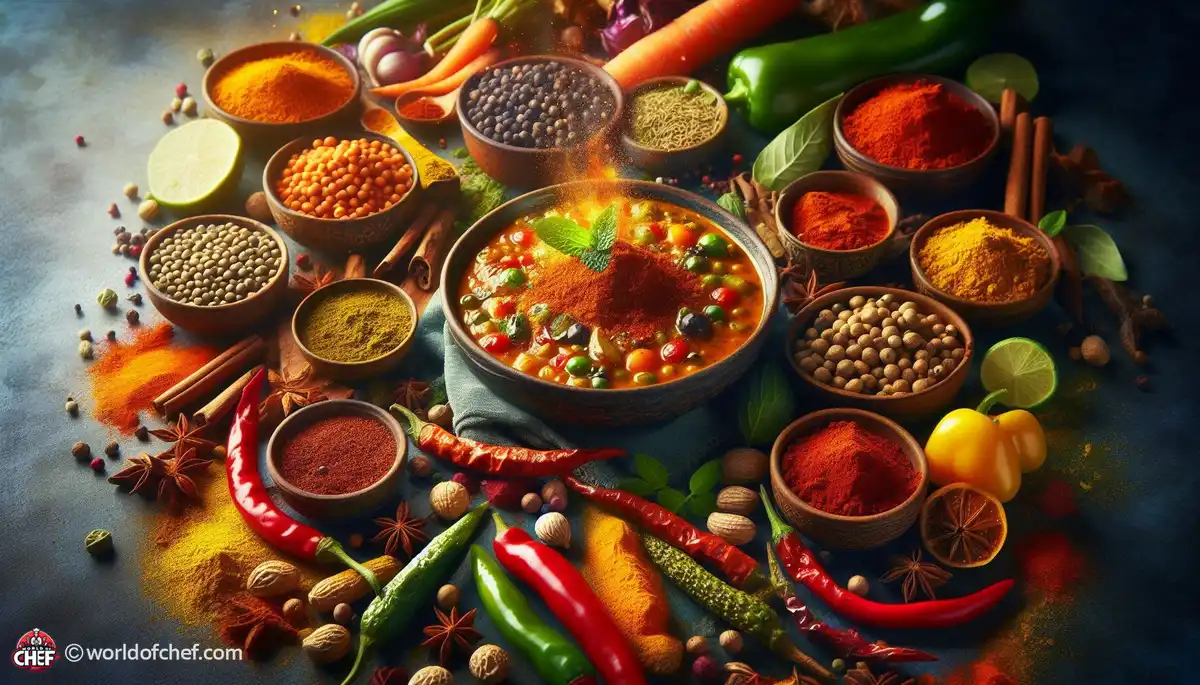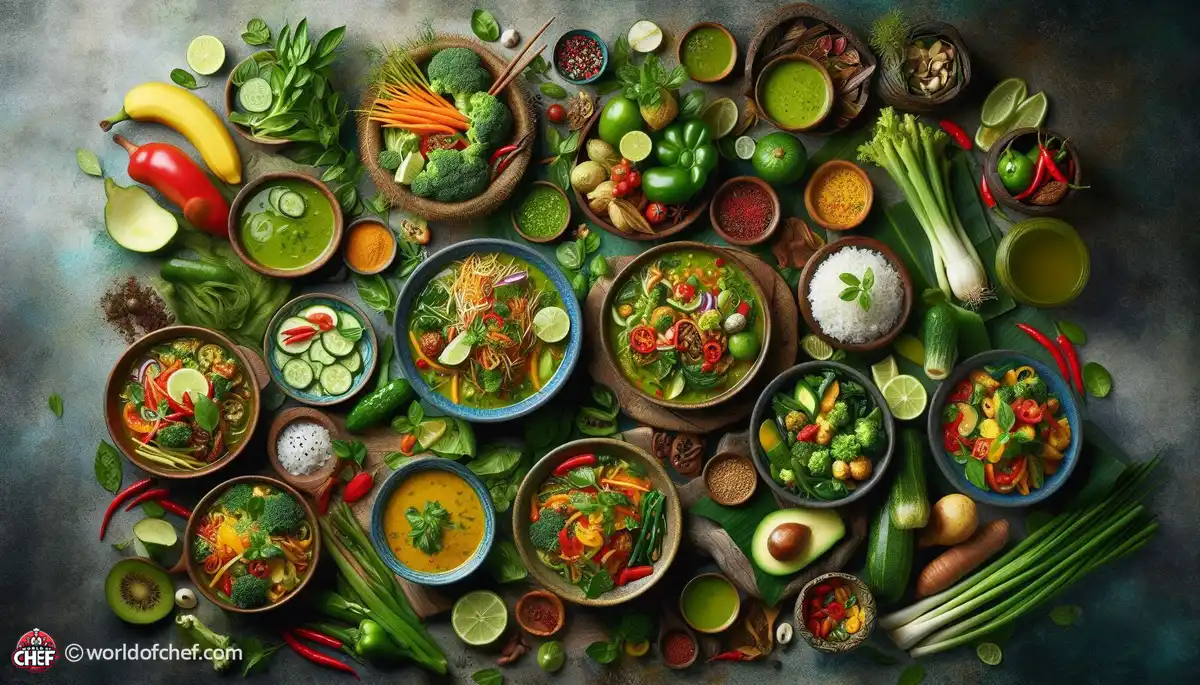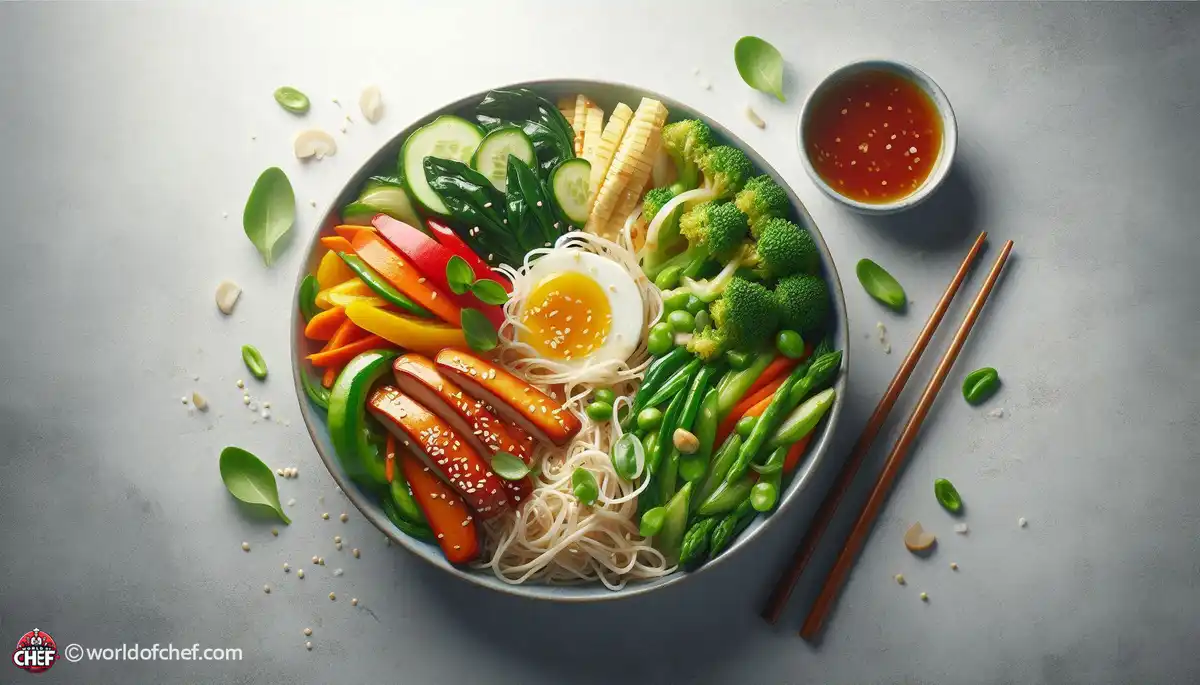
Unveiling the Secrets of Moroccan Spice Blends
Joel Spurgeon - Oct 5, 2024 - 7 min read


The vibrant and varied flavors characteristic of Indian cuisine are an enigma wrapped in its excellent blend of spices and seasonings. From pungent cardamom to fiery red chili peppers, each spice brings some character to the dish while creating a symphony of taste that dances across the palate.
The use of spices in Indian cooking is, after all, an art perfected over centuries. From the earthy warmth of cumin to the citrusy tang of coriander and the floral notes of saffron, every spice plays its own crucial role in elevating the overall flavor profile of the dish. The fine balance of these spices alone is what makes Indian vegetarian cuisine stand out and elevate even the simplest of dishes to the level of a masterpiece.
The key to unlocking the full potential of these spices is in the technique of tempering, where whole spices are gently roasted in oil to release their aromatic oils and flavors. This process infuses the dish with layers of complexity and depth, ensuring that every bite is bursting with flavor.
Another hallmark of Indian Vegetarian Cooking is that it is characterized by fresh, seasonal ingredients, and then there is the kaleidoscope of color and vitality-from the highly colored vegetables such as eggplant and okra to the hearty legumes like lentils and chickpeas.
Fresh ingredients give the dish a flavor, but they also ensure that it is nutritious and wholesome. In Indian culture, food is not just a source of sustenance but also medicine, and the use of fresh, seasonal produce is believed to promote health and well-being.
In addition to vegetables and legumes, Indian cuisine also uses spices and herbs such as garlic, ginger, and curry leaves. They add depth in flavor besides giving a full complement of Health Benefits which range from Boosting Immunity levels to facilitating digestion.
A country so gigantic and colorful, India boasts a culinary landscape as extensive as its culture and geography. There are different culinary traditions found in various parts of the country, driven by climatic, geographic, and cultural factors.
Indian vegetarian cooking runs the gamut, literally from the fiery curries of the north to coconut-infused dishes in the south. Whether the dish is the creamy richness of paneer in Punjab, the tangy tamarind-based gravies in Tamil Nadu, each regional cuisine has its treasures hidden away.
This diversity is also seen in its cooking techniques, which vary from region to region with unique methods and practices. From slow-cooked dum pukht to quick stir-fries of the south, Indian vegetarian cuisine is as diverse as it is delicious.
One of the defining characteristics of Indian vegetarian cuisine is its mastery of layering flavors. In other cuisines, flavors are added all at once, but in Indian cooking, layers of flavor are built gradually, allowing each ingredient to fully develop and shine.
At the heart of this flavor layering technique is the choice and combination of spices added at each stage of the cooking process to bring out the distinct flavor of each spice and harmonize with the other ingredients.
The whole spices are tempered at the very beginning of the process. The tempering involves sautéing whole spices in hot oil, releasing their aromatic oils and flavors. This not only adds depth and complexity to the dish but also gives a flavorful base on which other ingredients can build.
The other important characteristic of Indian vegetarian cuisine is flavor layering in the form of balancing sweet, sour, salty, and spicy. This cuisine seeks to find the perfect balance between the four where other cuisines may be primarily about a singular or dual sense.
All these ingredients and spices like sugar, tamarind, salt, and chili peppers are in perfect harmony. Each ingredient adds a specific flavor profile to the dish such that it becomes a symphony of tastes, titillating taste buds.
For example, while sugar in chutneys and pickles balances the sweetness with vinegar or lemon juice, the chilies help neutralise the richness of spices like cumin and coriander. The resultant flavor is complex and multi-dimensional, satisfying and delightful.
Textural contrast is also another area Indian vegetarian cuisine emphasizes. While dals are creamy, pakoras are crispy; every dish is a variation of texture that adds a different dimension to the act of eating.
This textural contrast is achieved through a variety of cooking techniques, such as frying, roasting, steaming, and simmering. For instance, in dishes like biryanis and pilafs, the fluffy texture of basmati rice is contrasted with the tender bite of vegetables and the crunch of fried onions and nuts.
In the snacking items of samosa and kachori, the crunchiness of the outer layer is mixed with the softness of the filling, giving a sweet interplay of textures that delight the taste buds. This emphasis on textural contrast not only adds taste to the dish but also visual appeal, making the dish even more appetizing.
Umami, in a way, is the fifth taste that brings depth and richness to all sorts of Indian vegetarian dishes. While most often associated with salty, savory ingredients such as meat and fish, it is the Indian dish that shows plant-based ingredients can conjure this mystical taste sensation too.
The primary umami source in Indian vegetarian foods includes yogurt, cream, and paneer. These items contribute not only creaminess and richness but also towards the umami flavor of food.
Tomatoes, mushrooms, and soy sauce also have umami-rich elements, which are commonly added to Indian food to make the depth of flavor much more intense apart from the dairy. The tangy sweetness of the ripe tomatoes in a curry or the meaty texture of mushrooms in a biryani are just two examples that add a rich savory satisfaction and comfort to the food.
The other process adopted in Indian vegetarian cooking involves the use of slow cooking to intensify depth in flavor. This way, ingredients simmer and stew over a low flame for hours, allowing flavors to come out fully, rich, complex, and deeply satisfying.
One of the more classic slow-cooked methods is a staple Indian household dish known as dal, where lentils are slow-cooked with aromatics and spices until they disintegrate into a rich, thick consistency.
Similarly, kormas and curries are largely simmered over for hours and hours on which the spices and all-seasonings are able to immerse into the dishes while giving them a highly flavoured and complex-rich sort of taste. Such types of dishes give much complexity and character, that whatever spoonful is eaten forms a real indulgent enjoyment.
Fermentation is the other ancient Indian vegetarian food preparation technique. This method allows the ingredients to ferment and develop their own natural probiotics, whereby fermentation not only makes food taste better but also facilitates digestion and health in the gut.
Perhaps the quintessential fermented food of Indian cuisine is yogurt, used in a wide range of savory and sweet preparations. From the creamy richness of raita to the sharp tartness of lassi, there is an element of glee in Indian dishes that no one else can match.
Along with yogurt, a country of such diversity always boasts the delights of pickle, chutney, and dosa batter along with it. These all have the essence of their being fermented and add quite an intense flavor to your food while giving you myriad health benefits.

Joel Spurgeon - Oct 5, 2024 - 7 min read

Aaliyah Martini - Oct 5, 2024 - 6 min read

Jesse Brownell - Oct 5, 2024 - 7 min read

Taylor Damon - Oct 4, 2024 - 20 min read